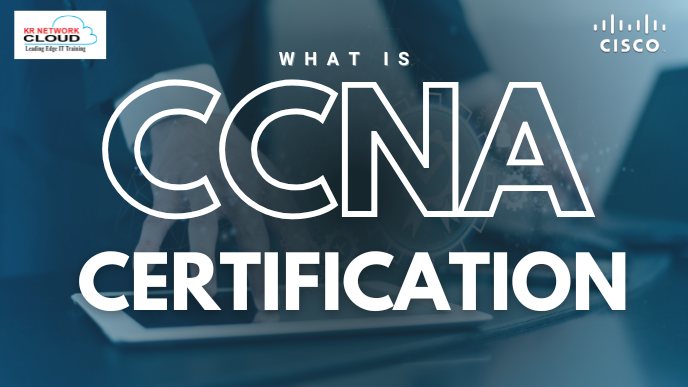Exploring Linux Flavors and Their Vendors

- KR NETWORK CLOUD
- April 16, 2025
Linux’s diversity is one of its greatest strengths, with each flavor offering unique features and histories shaped by its vendor. Below, we dive into the major Linux flavors, their vendors, and their historical evolution, providing a comprehensive guide for beginners and aspiring Linux admins. We also highlight how KR Network Cloud supports learning Red Hat Linux, a leading enterprise flavor.
What Are Linux Flavors?
Linux flavors, also called distributions or “distros,” are customized versions of the Linux operating system. Each flavor includes the Linux kernel—developed by Linus Torvalds in 1991—but varies in its software packages, user interfaces, and system configurations. This customization stems from Linux’s open-source nature, governed by the GNU General Public License (GPL), which allows anyone to modify and distribute the code.
Flavors exist to serve different purposes:
- Enterprise servers: Require stability and long-term support.
- Desktops: Focus on user-friendliness and graphical interfaces.
- Development: Prioritize cutting-edge features or customization.
For example, Red Hat Enterprise Linux (RHEL) is tailored for businesses, while Ubuntu is popular for its accessibility. The variety of flavors ensures Linux can meet diverse needs, from powering 80% of public cloud workloads to running personal laptops.
What Are Linux Vendors?
Vendors are the organizations or communities behind Linux flavors. They develop, maintain, and distribute these distros, shaping their features and support models. Vendors can be commercial companies, like Red Hat or Canonical, or community-driven groups, like those behind Debian or Arch Linux. Understanding vendors is key for Linux admins, as they influence the flavor’s reliability, updates, and enterprise readiness. Vendors fall into two categories:
- Commercial Vendors: Companies like Red Hat and Canonical offer paid support, certifications, and enterprise tools. They focus on reliability and compatibility with business applications.
- Community-Driven Vendors: Groups like The Debian Project or Arch Linux rely on volunteers, emphasizing open-source principles and user flexibility.
Vendors are critical to the Linux ecosystem, as they provide updates, security patches, and documentation. For Linux admins, choosing a vendor-backed flavor like RHEL often means access to dedicated support, while community-driven flavors offer customization at the cost of self-reliance.
Major Linux Flavors and Their Vendors
Below is a detailed look at eight major Linux flavors, their vendors, and their histories, based on their prominence and relevance in IT environments.
1. Red Hat Enterprise Linux (RHEL)
- Vendor: Red Hat
- History: Founded in 1993 by Bob Young and Marc Ewing, Red Hat released its first Linux distribution in 1994. RHEL, launched in 2000, was designed for enterprise environments, building on the success of Red Hat Linux. Red Hat’s acquisition of CentOS in 2014 and its sponsorship of Fedora have made it a dominant player in enterprise Linux (Red Hat).
- Key Features: RHEL offers long-term support (up to 10 years per version), robust security, and integration with cloud platforms like AWS and Azure. It’s widely used for mission-critical applications in industries like finance and healthcare. RHEL’s package manager, yum (now dnf), simplifies software management.
- Use Case: Enterprise servers, cloud deployments, and containerized environments.
- Training: KR Network Cloud provides specialized training for Red Hat Linux, covering RHEL administration and preparing students for certifications like RHCSA (Red Hat Certified System Administrator). This training is ideal for aspiring Linux admins aiming for enterprise roles (KR Network Cloud).
2. Ubuntu
- Vendor: Canonical
- History: Founded by Mark Shuttleworth in 2004, Canonical launched Ubuntu, based on Debian, to create a user-friendly Linux distribution. Named after the Nguni philosophy of “ubuntu” (humanity), Ubuntu releases new versions every six months, with Long Term Support (LTS) versions supported for five years.
- Key Features: Ubuntu is known for its polished graphical user interface (GUI) and extensive community support. It uses the apt package manager and is popular for desktops, servers, and cloud environments. Ubuntu’s variants, like Kubuntu (KDE Plasma) and Xubuntu (Xfce), offer different desktop experiences.
- Use Case: Beginners, cloud computing, and development environments.
3. CentOS
- Vendor: Community (sponsored by Red Hat)
- History: CentOS, created by Greg Kurtzer in 2004, was a free alternative to RHEL, built from RHEL’s source code. Red Hat acquired CentOS in 2014, and in 2020, introduced CentOS Stream as a rolling-release platform for testing RHEL features. This shift sparked debate among users who preferred CentOS’s original stability.
- Key Features: CentOS Stream provides a midstream between Fedora and RHEL, offering early access to new features. It uses yum/dnf like RHEL and is free, making it popular for testing and budget-conscious servers.
- Use Case: Server environments, testing, and learning RHEL-compatible systems.
4. Fedora
- Vendor: Red Hat (community-supported)
- History: Launched in 2003 as a successor to Red Hat Linux, Fedora serves as a testing ground for technologies later integrated into RHEL. Sponsored by Red Hat, it’s driven by a community of developers and enthusiasts (Red Hat).
- Key Features: Fedora is known for its cutting-edge features and six-month release cycle. It uses dnf and supports modern desktop environments like GNOME.
- Use Case: Developers, enthusiasts, and early adopters.
5. Debian
- Vendor: The Debian Project (community-driven)
- History: Founded in 1993 by Ian Murdock, Debian is one of the oldest Linux distributions. Named after Ian and his wife, Debra, it emphasizes free software and stability. Debian is the foundation for many flavors, including Ubuntu.
- Key Features: Debian’s vast software repository and apt package manager make it versatile. It offers stable, testing, and unstable branches, catering to servers and desktops.
- Use Case: Servers, desktops, and as a base for other distributions.
6. SUSE Linux Enterprise Server (SLES)
- Vendor: SUSE
- History: Founded in 1992 in Germany, SUSE released its first Linux distribution in 1994. SLES, designed for enterprises, competes with RHEL in markets like finance and manufacturing.
- Key Features: SLES offers reliability, scalability, and support for cloud and container technologies. It uses the zypper package manager and is known for its enterprise-grade support.
- Use Case: Enterprise servers and industry-specific applications.
7. Arch Linux
- Vendor: Arch Linux (community-driven)
- History: Created in 2002 by Judd Vinet, Arch Linux focuses on simplicity and user control. Its rolling-release model provides continuous updates.
- Key Features: Arch Linux is highly customizable, with minimal pre-installed software. Its documentation, the Arch Wiki, is a valuable resource for Linux users.
- Use Case: Advanced users seeking a lightweight, tailored system.
8. Linux Mint
- Vendor: Linux Mint (community-driven)
- History: Founded in 2006 by Clément Lefebvre, Linux Mint is based on Ubuntu and aims to provide a user-friendly experience.
- Key Features: Linux Mint offers desktop environments like Cinnamon, MATE, and Xfce, making it accessible for beginners. It uses apt and includes pre-installed software for everyday use.
- Use Case: Desktop users and beginners.
Comparison of Linux Flavors
The following table compares the major Linux flavors based on key attributes:
| Flavor | Vendor | Release Model | Package Manager | Primary Use Case | Support |
|---|---|---|---|---|---|
| RHEL | Red Hat | Fixed (10 years) | yum/dnf | Enterprise servers, cloud | Commercial |
| Ubuntu | Canonical | Fixed (6 months) | apt | Desktops, servers, cloud | Commercial/Community |
| CentOS Stream | Community (Red Hat) | Rolling | yum/dnf | Servers, testing | Community |
| Fedora | Red Hat (Community) | Fixed (6 months) | dnf | Development, enthusiasts | Community |
| Debian | Debian Project | Fixed (2-3 years) | apt | Servers, desktops | Community |
| SLES | SUSE | Fixed (10 years) | zypper | Enterprise servers | Commercial |
| Arch Linux | Arch Linux | Rolling | pacman | Advanced users, customization | Community |
| Linux Mint | Linux Mint | Fixed (2 years) | apt | Desktops, beginners | Community |
The Role of Vendors in the Linux Ecosystem
Vendors are the backbone of Linux’s success, contributing in several ways:
- Development and Maintenance: Vendors create and update flavors, ensuring compatibility with modern hardware and software.
- Support and Certifications: Commercial vendors like Red Hat offer paid support and certifications like RHCSA, validating skills for enterprise roles.
- Innovation: Vendors drive new features, such as Red Hat’s OpenShift for containers or Canonical’s cloud optimizations in Ubuntu.
- Community Engagement: Community-driven vendors foster collaboration, with resources like the Arch Wiki or Debian’s forums benefiting the broader Linux community.
The balance between commercial and community efforts ensures Linux remains both enterprise-ready and accessible to enthusiasts.
Training and Certification with KR Network Cloud
For aspiring Linux admins, mastering a flavor like RHEL is a gateway to a rewarding career. Certifications like RHCSA demonstrate proficiency in managing enterprise Linux systems, covering tasks like user administration, file management, and server configuration. KR Network Cloud offers comprehensive training for Red Hat Linux, providing hands-on experience with RHEL and preparing students for RHCSA and RHCE exams. Their courses are tailored for beginners and professionals, making them an excellent resource for building enterprise Linux skills (KR Network Cloud).
FAQs
Q. What are Linux flavors?
Linux flavors are customized versions of the Linux operating system, each with unique software and configurations.
Q. Who are Linux vendors?
Vendors are companies (e.g., Red Hat, Canonical) or communities (e.g., Debian Project) that develop and maintain Linux flavors.
Q. Why are there multiple Linux flavors?
Flavors exist to meet diverse needs, such as enterprise stability, user-friendliness, or advanced customization.
Q. What is the difference between RHEL and CentOS Stream?
RHEL is a commercial enterprise distribution with paid support, while CentOS Stream is a free, rolling-release platform for testing RHEL features.
Q. Why is Red Hat popular in enterprises?
Red Hat offers long-term support, robust security, and certifications like RHCSA, trusted by businesses.
Q. Which Linux flavor is best for beginners?
Ubuntu and Linux Mint are recommended for their user-friendly interfaces and extensive documentation.
Q. How does KR Network Cloud support Linux training?
KR Network Cloud provides Red Hat Linux training, preparing students for RHCSA certification and enterprise roles.
Q. Can I switch between Linux flavors?
Yes, core Linux skills are transferable, though flavor-specific tools (e.g., yum vs. apt) may require learning.
Q. What is the history of Debian?
Founded in 1993 by Ian Murdock, Debian is one of the oldest distributions, known for its stability and free software focus.
Q. How do vendors influence Linux development?
Vendors drive innovation, provide support, and maintain flavors, balancing commercial and open-source goals.
Conclusion
Linux flavors and vendors are at the heart of the operating system’s versatility and widespread adoption. From Red Hat’s enterprise-grade RHEL to Ubuntu’s user-friendly desktop experience, each flavor has a unique history and purpose shaped by its vendor. Understanding these flavors and their vendors empowers aspiring Linux admins to choose the right tools for their projects and careers. For those targeting enterprise roles, KR Network Cloud’s Red Hat Linux training offers a practical path to mastering RHEL and earning certifications like RHCSA. Dive into the world of Linux flavors today and unlock the potential of open-source technology.







